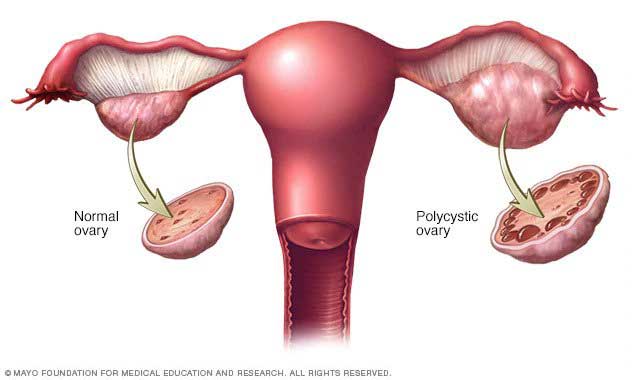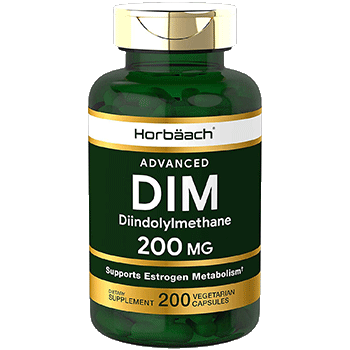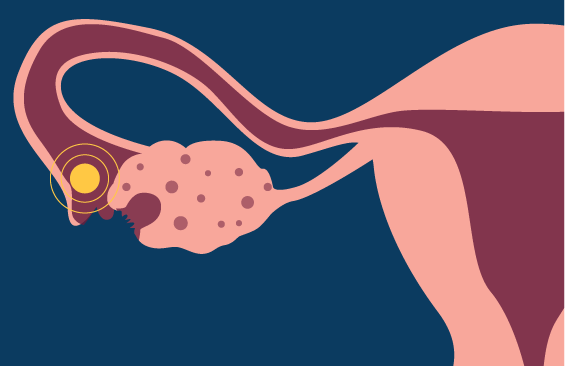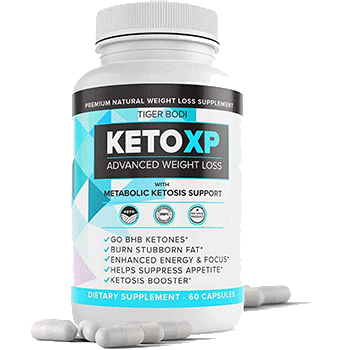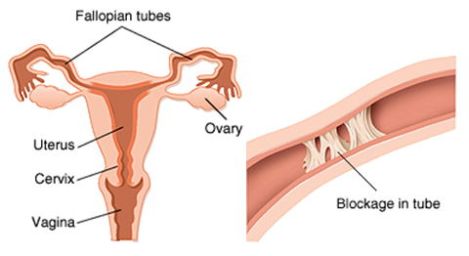
Estrogen Dominance – 28 Bad Signs And Symptoms Every Woman Should Know
Do You Show Any Of The Following Signs? Do You Know If You Have Estrogen Dominance? Here’s What To Look For.
Millions of women suffer from estrogen dominance. In case you’re wondering if it affects you, YOU DO SUFFER FROM ESTROGEN DOMINANCE!
Because in fact, every woman suffers from estrogen dominance to some extent!
In this article, we’ll dig deep into estrogen dominance that affects EVERY WOMAN on earth.
You’ll find out why you cannot lose that belly fat, or you just can’t seem to get a smooth face, or your hair keeps thinning no matter what products you try.
I see millions of women chasing fad diets and “detox miracles” to lose weight.
Others chasing magic hair and cosmetic products.
Millions of others chasing acne treatments…
The plain truth is that these just WILL NOT WORK unless you balance your hormones first!
OR
Maybe you’ve really worked hard with your fitness guru and even lost some weight, but you just can’t seem to melt off that belly fat!
Your biggest enemy is likely to be ESTROGEN DOMINANCE.
What Is Estrogen Dominance?
Estrogen dominance occurs when the level of the hormone estrogen outweighs the level of the hormone progesterone. It usually happens when production of progesterone decreases without subsequent decrease in estrogen.
Estrogen has currently about 300 known functions in the body. It’s a necessary hormone, but too much of it can wreak havoc in your body, especially when it’s not properly balanced in relation to progesterone.
Even women with low estrogen could be suffering from estrogen dominance if it’s not properly balanced with progesterone.
Some symptoms will shock you – and you probably have more than one!
What Causes Estrogen Dominance?
The world we live in today has so much estrogen-mimicking products that it’s hard to avoid their effects. It’s safe to say that almost everyone (men and women) has some effects of estrogen dominance.
There are several causes of Estrogen dominance:
1: Environmental Estrogen Mimicking “Xenoestrogens”
Thousands of man-made products contain industrial chemicals that mimic the behavior of estrogens (xenoestrogens) and disrupt your hormone balance.
You would literally have to live in a bubble to escape the excess estrogens we’re exposed to in our daily, modern environment.
Here are a few environmental exposures to xenoestrogens:
- Cosmetics – yes, you read that right! Some cosmetics contain parabens commonly used as preservatives. Others contain 4-Methylbenzylidene camphor (4-MBC) and Benzophenone like some sun screens. These will harm you!!
- Plastics – Bisphenol A (BPA), Phthalates, DEHP, Polybrominated biphenyl ethers (PBDEs) & polychlorinated biphenyls (PCBs) are found in almost all plastics. BPA is associated with gynecological cancers such as breast, uterine and endometrial cancers (1).
- Pesticides – you’ll take these in your food like fruits and vegetables, and they cause a lot of harm. Pesticides disrupt our endocrine systems (2). They’ve been shown to affect both male and female fertility, menstrual cycles, ovulation & menstruation (3).
- Soaps & detergents – most commonly used are phthalates, a potent estrogen disruptor (4).
- Car exhaust fumes – lots of research show these cause estrogen and endocrine disruption (5).
- Meats – the meat we eat every day passes estrogen from the animal the meat came from. One study found far more estrogen in meat eaters than vegetarians (6).
- Birth control pills – birth control pills and hormone replacement therapy add more estrogen without the balance of progesterone. This causes estrogen dominance.
2: Stress
Chronic stress is one of the main reasons women become estrogen dominant.
When you’re stressed or overly busy, your cortisol levels go sky high. Cortisol gears up your body for high energy, and curbs functions that are non-essential to fight or flight.
When your cortisol climbs, the body has to use up progesterone to keep up. This means there’s less progesterone available to balance estrogen, leading to estrogen dominance.
3: Being overweight
Excess body fat is one of the main causes of estrogen dominance.
Fat tissue absorbs and stores estrogen in your bloodstream, and it also synthesizes estrogen from your other hormones.
As expected, the more fat cells you have, the more estrogen you will make. The more estrogen you make, the more fat you store, and the cycle continues.
4: Signs And Symptoms Of Estrogen Dominance
Potential signs and symptoms of estrogen dominance include:
1: Fibrocystic Breasts
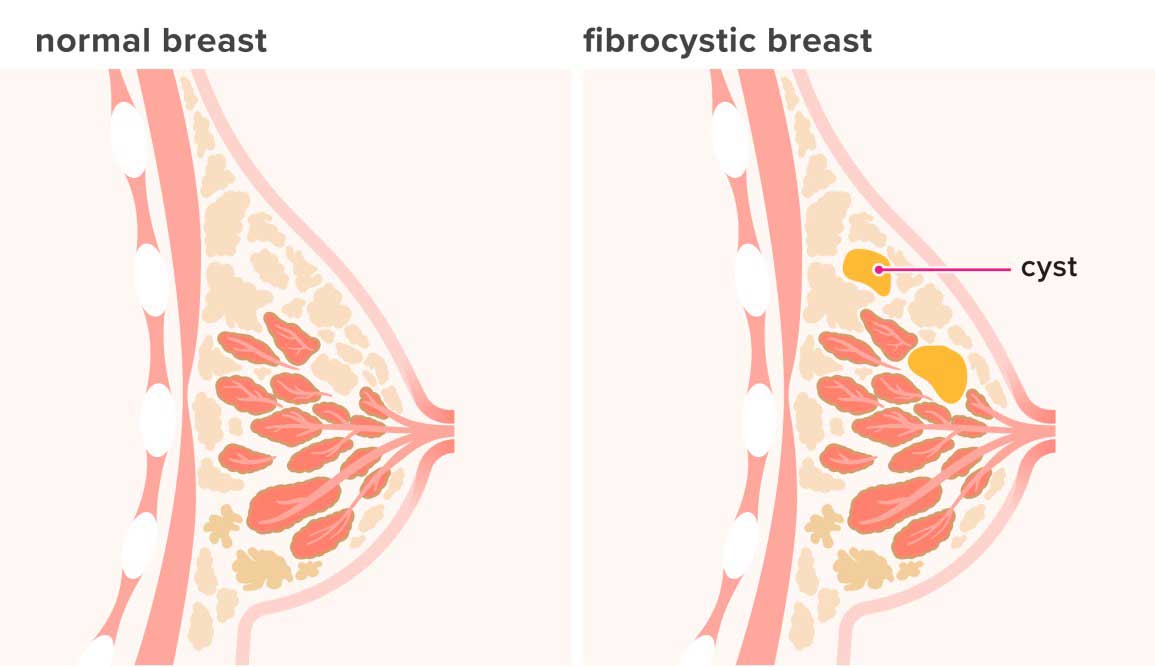
Lumpy breasts can be bothersome and uncomfortable. It can also be alarming for some women who can mistake it for breast cancer.
Ref. Healthline
One common symptom of estrogen dominance is fibrocystic breasts. These are non-cancerous lumps in the breasts, caused by fluid-filled cysts in the breasts.
They are usually movable, and can change in size through the month.
Breast tissue responds to fluctuating levels of hormones, especially estrogen.
More than half the women develop polycystic breasts in their lives. If you have polycystic breasts, you’ll experience:
- Lumps in one or both breasts
- Swelling
- Tenderness
- Pain
- Thickening of breast tissue
Your symptoms will usually get worse just before of during your period. The condition becomes less of a problem after menopause.
Balancing your hormones should help resolve this.
2: Swelling And Tenderness In Your Breasts

Swollen, tender breasts (cyclical mastalgia) can get uncomfortable and/or painful.
Your breast tissue responds to hormone levels, especially estrogen. The milk ducts and glands swell, sometimes becoming painful. This is called cyclical mastalgia.
2: Menstrual Problems

Estrogen dominance also causes menstrual problems such as
- Irregular periods
- Heavy bleeding
- Light spotting
GOT QUESTIONS?

Get A Free Expert Consultation
Navigating supplements without professional help can be expensive and dangerous. We are here to help.
There’s no obligation.
4: Allergies & Asthma
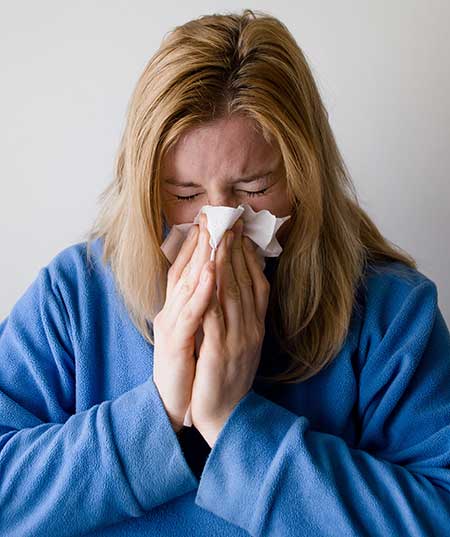
Women with high estrogen levels are more susceptible to asthma, pollen and food allergies. The body gets an immune response as if it is responding to an allergen, causing allergic response and worsening of asthma (7a).
5: Bloating & Water Retention
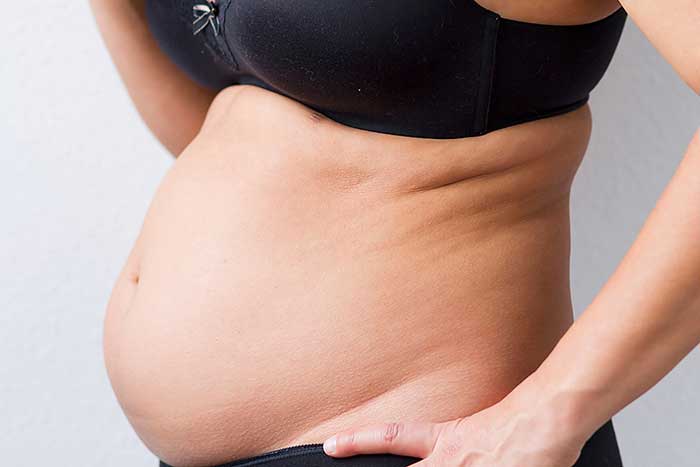
Bloating is caused by imbalanced reproductive hormones. Hormonal balancing can help
Most women experience weight gain and bloating just before and during their periods due to water retention. This is caused by estrogen and progesterone imbalance (8).
These two hormones have important effects on sodium retention and body fluid regulation, weight gain, and a potential risk to the heart (9).
6: Slow Metabolism & Weight Gain
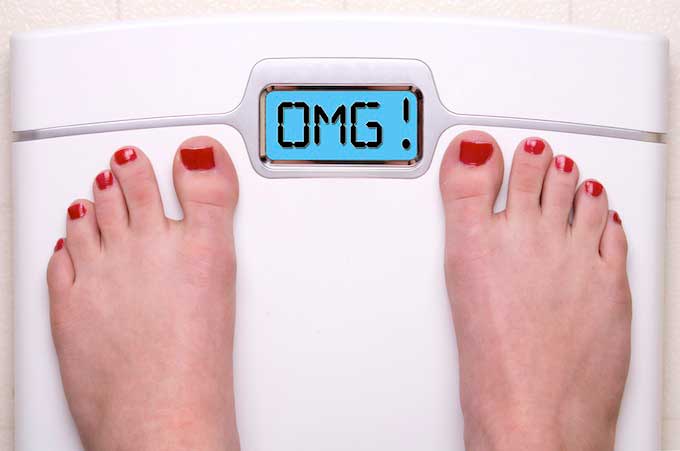
Slow metabolism, fat accumulation & water retention lead to weight gain. Balance your hormones and see the difference.
If you have estrogen dominance, you could be struggling to lose weight. This is one of the main reasons women find it hard to lose weight than men.
High levels of estrogen in the body are associated with high glucose levels, which in turn lead to weight gain (10).
7: Fat Accumulation
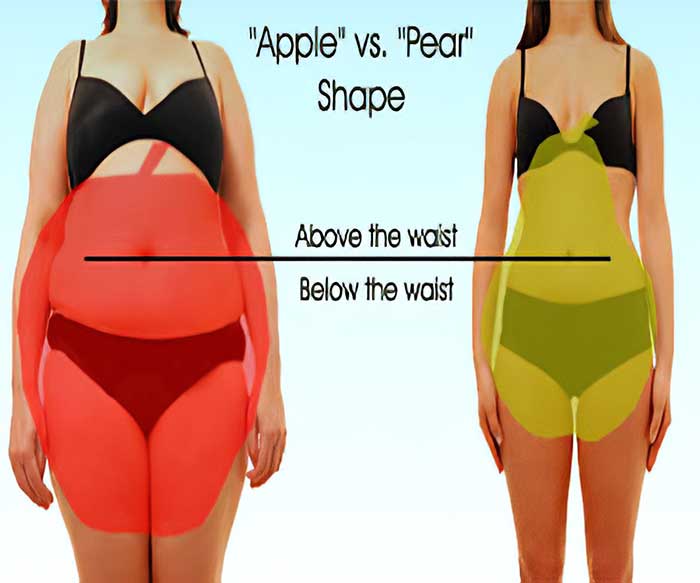
Apple shape can lead to diabetes and heart disease. Estrogen dominance with PCOS tends to lead to apple shape, and pear shape if there’s no PCOS.
You’ve probably tried to lose weight, but the fat just won’t go away. Those love handles just seem to persist. Or maybe you’ve really worked out and lost some weight, but you just can’t seem to lose belly fat.
If estrogen dominance has caused PCOS (see below), your weight gain will be more on the mid to upper body. This type of weight gain is more dangerous and can lead to diabetes or heart disease.
8: Skin Tags
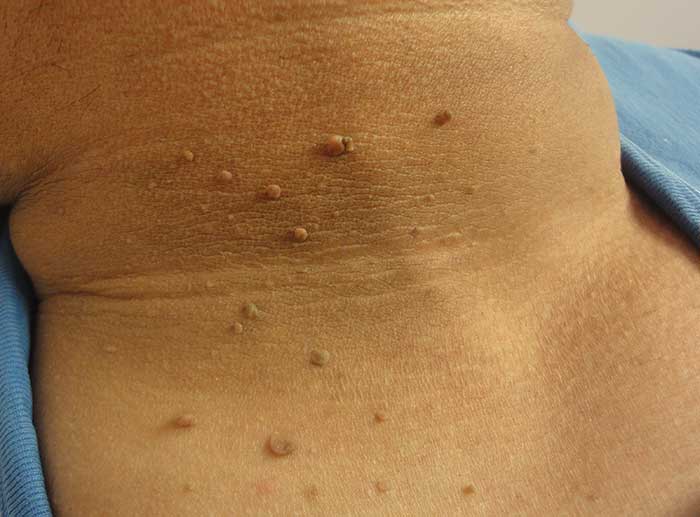
Skin tags indicate insulin resistance and/or weight gain, which can lead to diabetes. Balancing your hormones can solve both insulin resistance and weight gain.
A healthy body produces desired amount of insulin that maintains healthy levels of blood sugar. However, high levels of estrogen in the body stresses the cells that produce insulin.
This can lead to insulin resistance, and high glucose levels (and weight gain).
Skin tags are associated with insulin resistance and obesity (11, 12).
It’s important to note there’s a thin line on whether skin tags are caused by estrogen imbalance, insulin resistance or weight gain. One can cause the other and vise-versa.
9: Darkening Of Skin On The Neck & Armpits
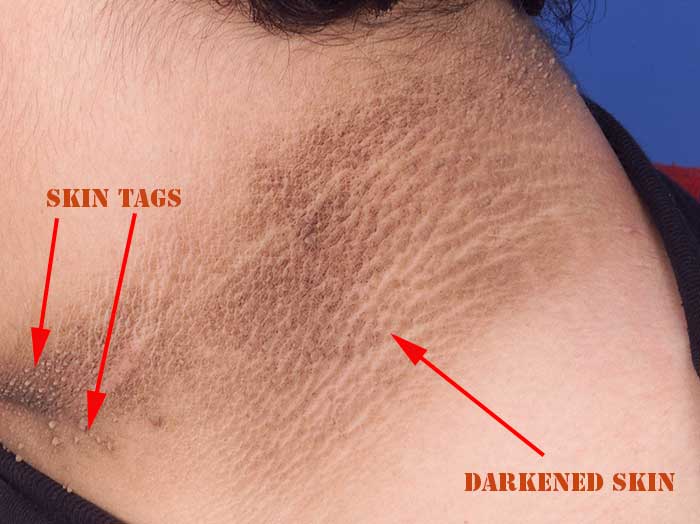
Doctors use skin darkening on neck and armpits to further evaluate patients for possible pre-diabetes or diabetes. This usually results from insulin resistance, sometimes caused by estrogen dominance. Balancing your hormones can solve this.
One of the commonest causes of skin darkening is insulin resistance and PCOS. There are other possible causes like underactive thyroids, problems with the adrenal glands, cancer or certain drugs like birth control pills, corticosteroids, and niacin.
This condition is called Acanthosis Nigricans.
Doctors frequently use acanthosis nigricans as a basis for further screening for pre-diabetes and diabetes.
10: Skin Pigmentation

Melasma is usually caused by elevated levels of estrogen and to a lesser extent, progesterone. Balancing your hormones can avoid this.
The female sex hormones, estrogen and progesterone, can also cause skin pigmentation, or Melasma (13). They stimulate the overproduction of melanin which leads to dark spots.
Research has found that elevated levels of estrogen, and to a lesser degree elevated progesterone levels, are associated with increased skin pigmentation, which can lead to melasma.
Melasma can also be caused by other factors like stress, thyroid disorders, and exposure to sunlight and heat.
Hormonal balancing can help you treat melasma.
11: Rapid Aging

Estrogen dominance makes the effects of estrogen destructive, leading to rapid aging. Balancing estrogen with progesterone is the key to preventing aging of the skin.
Estrogen plays an important role in keeping your skin soft, smooth and attractive. In fact, women are more attractive before and during ovulation, when they have higher than normal estrogen levels.
However, estrogen dominance in relation to progesterone makes the effects of estrogen destructive to the skin, causing rapid aging (14).
The key to keeping a smooth, healthy skin is estrogen balance with progesterone.
12: Estrogen Dominance Causes Acne
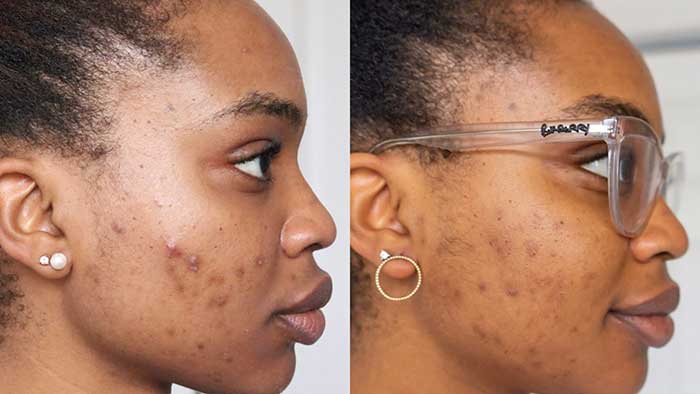
Cystic Acne caused by estrogen dominance.
Hormonal acne and oily skin are mainly associated with an imbalance of estrogen to androgen ratio (15) – such as high levels of testosterone.
It can also be caused by high levels of progesterone (16).
Research shows it’s easier and better to treat acne without antibiotics and creams (17, 18). Of course, this is not good news for commercial dermatologists.
13: Abnormal Hair Growth
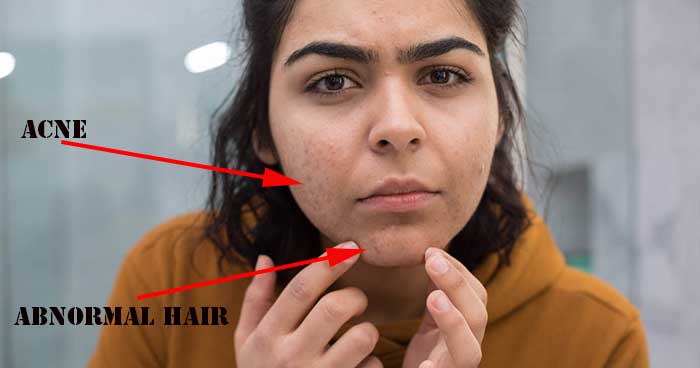
Abnormal hair (hirsutism) is normally caused by male hormones (androgens), usually resulting from polycystic ovaries due to estrogen dominance.
A hairy chin or brow, or hair in abnormal places can indicate an imbalance between estrogen and androgens (such as high levels of testosterone).
This condition is called hirsutism, where hair grows in a male-like pattern – like face, chest, stomach, toes and back.
It’s common in women with PCOS. Hirsutism can also be caused by other factors like Cushing’s syndrome, some medications and drugs.
14: PCOS – Polycystic Ovaries
Pic from Mayo Clinic
Estrogen dominance is commonly linked with PCOS. Because of an excess amount of androgens (male hormones), women with PCOS often experience a hormone imbalance that prevents ovulation, hence fertility problems.
PCOS may also cause other symptoms included here – such as weight gain, hair loss, PMS and male-like hair growth.
15: Irregular Menstrual Periods
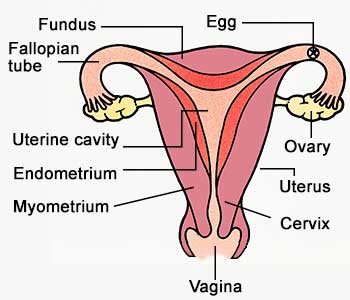
Irregular or missed periods can be caused by many reasons, including PCOS, which is thought to be caused by estrogen dominance.
16: Pre-Menstrual Syndrome (PMS)

Most symptoms of PMS disappear with hormonal balancing.
About 90% of women report having PMS (7). Environmental exposure to chemical disruptors of estrogen seems to have a huge effect on the prevalence of PMS.
High levels of estrogen cause increased symptoms of PMS. Hormonal balancing is recommended to control PMS.
17: Uterine Fibroids
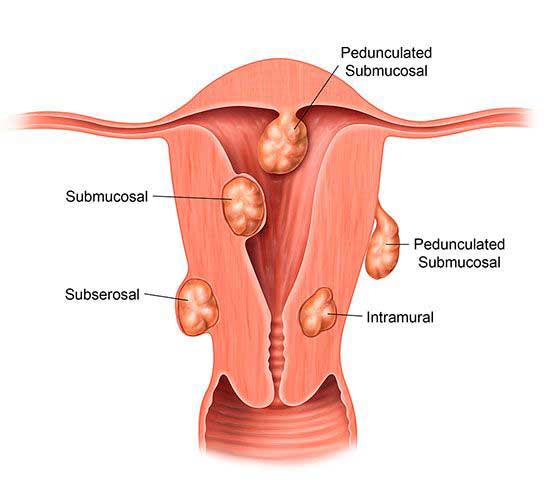
Hormonal balancing can control uterine fibroids
The causes of uterine fibroids remain contested, and there’s no one definite causative reason. However, scientific evidence shows that high levels of estrogen cause fibroids, while progesterone seems to inhibit the growth of the same fibroids (19).
Maintaining the balance of estrogen and progesterone controls the proliferation and severity of uterine fibroids (20).
18: Endometriosis
Endometriosis is highly estrogen-dependent (21). It has been linked to high levels of estrogen by the Mayo Clinic.
19: Low Sex Drive & Vaginal Dryness

Hormonal imbalance can cause low sex drive and vaginal dryness
Women with high estrogen levels experience high sex drive, but not when the estrogen is not counter-checked by healthy levels of progesterone and androgens.
Such imbalance and estrogen dominance often cause vaginal dryness, vaginal atrophy (a loss of muscle tension), and decreased clitoral sensitivity.
The other consequences of estrogen dominance, such as weight gain, mood swings and fatigue (see below), add to the problem.
Proper estrogen balance and a female androgen called DHEA has been shown to increase sex drive, prevent vaginal dryness, help in weight loss, as well as some anti-aging properties.
20: Trouble Sleeping (Insomnia)

Balancing your hormones will give you a good night’s sleep.
Both estrogen and progesterone affect sleep.
If you are one of the millions of women who suffer from insomnia, then you could be suffering from imbalanced estrogen levels.
Often, this is due to a drop-off in a woman’s progesterone production, which is affected both by age and stress levels. In turn this causes estrogen dominance.
At the same time, estrogen has been shown to improve the quality of sleep, reduce time to fall asleep, and increases the amount of rapid eye movement (REM sleep). Sleep lab studies also indicate estrogen reduces the number of times a patient awakens and may improve cognitive function.
As the National Sleep Foundation notes:
“During the course of perimenopause through menopause, a woman’s ovaries gradually decrease production of estrogen and progesterone, a sleep-promoting hormone. The shifting of ratios of hormones can be an unsettling process, sometimes contributing to the inability to fall asleep.”
Improper levels of estrogen or progesterone will affect your sleep. Balancing your hormones will give you a good night’s sleep.
21: Hair Loss & Thinning
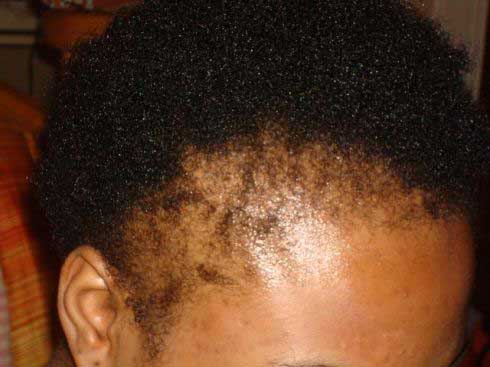
Estrogen balance is important in many aspects of female beauty including skin and hair (22).
You could be wasting money on countless creams and hair products trying to rejuvenate your hair. But this might never work without balancing your hormones first.
When the levels of estrogen and progesterone drop, hair grows more slowly and becomes much thinner. A decrease in these hormones also triggers an increase in the production of androgens, or a group of male hormones. Androgens shrink hair follicles, resulting in hair loss on the head.
Estrogen balance is important in many aspects of female beauty including skin and hair (22).
22: Anxiety, Mood Swings & Panic Attacks

Estrogen dominance makes you feel on the edge. It can make you more anxious and irritable, and increase mood swings.
It can also make you feel exaggerated emotions such as jealousy, overwhelm and sadness.
23: Cold Hands & Feet

This could also be a symptom of thyroid dysfunction.
The reasons for cold hands and feet aren’t very well explained, but many people with dominant estrogen levels also have poor circulation and as a result get cold hands and feet.
We do know that estrogen has something to do with circulation, but more research needs to be done in this area as well.
24: Thyroid Dysfunction
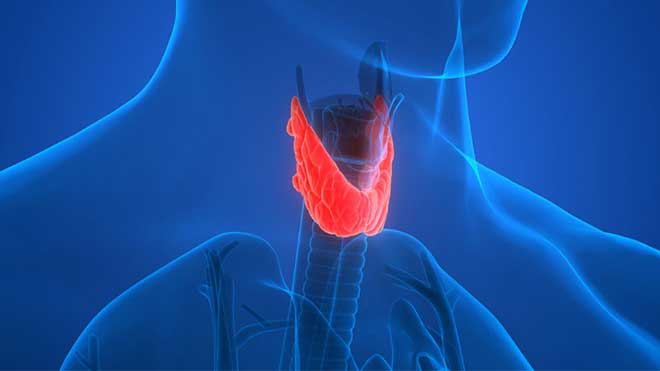
Balancing your hormones can make your thyroid more efficient, along with hypothyroidism symptoms (below).
Estrogen dominance can cause thyroid dysfunction and hypothyroidism (23). Symptoms of hypothyroidism include symptoms caused by estrogen dominance itself, such as:
- Depression
- Weight gain
- Tiredness
- Slow movements and thoughts
- Being sensitive to cold
- Muscle cramps
- Dry, scaly skin
- Low sex drive
- Pain, numbness and a tingling sensation in the hand and fingers
- Irregular or heavy periods
25: Foggy Thinking & Memory Loss

Balancing your hormones can help you think clearer!
Memory loss and brain fog are common in menopause, but they can start at a relatively young age.
If you’re going through forgetfulness, and difficulty concentrating and thinking clearly, you may be having estrogen dominance.
Balancing your hormones can help!
26: Headaches

Getting those persistent headaches? Balancing your hormones can help you treat them.
Getting those frequent headaches? You probably have estrogen imbalance.
A headache can be triggered any time there is a fluctuation in estrogen levels. This is especially common around the time of your menstrual cycle when there is a dip in estrogen levels.
Women may also experience more headaches around the start of menopause and when they undergo hysterectomy.
27: Sleepiness or Fatigue

If you’re spending your day feeling chronically tired or sleepy, you probably have estrogen dominance.
This symptom can occur whether or not you have insomnia. If you experience persistent tiredness or feel more drained of energy than usual, balancing your hormones will probably help!
28: Cellulite

If your blood sugar is imbalanced and your Estrogen & Progesterone are not in balance, then you’re likely to develop cellulite.
As you move towards menopause, estrogen levels drop, which can further exacerbate the situation.
Further, drop in estrogen levels can reduce blood towards connective tissue, causing it to become more rigid and tightening over those fat pockets. You can read more about cellulite here.
Natural Treatment For Estrogen Dominance
By understanding the signs and symptoms of estrogen dominance, you can probably reduce it naturally, even though this can be quite hard.
There are two effective treatments of estrogen dominance – DIM and Chasteberry castus.
Introducing DIM Supplement (3,3 Diindolylmethane)
DIM is a plant compound derived from cruciferous vegetables (e.g. cabbage, broccoli, cauliflower, etc.). It has picked up steam as a go-to treatment for maintaining estrogen and testosterone balance, and as an anti-cancer agent (24, 25). It’s known to treat a variety of issues such as
- Acne
- PMS & PCOS
- Fibroids
- Menopause symptoms
- Weight loss & maintaining a lean body mass
- Prostate health, as well as a horde of other benefits.
To get the maximum benefit of DIM, you’d need to eat a kilo of these vegetables every day (26).
Introducing Chasteberry Castus
Bottom Line
Estrogen dominance affects every woman in varying extents, sometimes in cyclical monthly cycle.
It causes a variety of bad symptoms such as acne, PMS, infertility, menstrual problems, weight gain, rapid aging, and so on.
Luckily, you can control estrogen dominance and its effects by balancing your hormones.
DIM and Chasteberry Castus are the most effective products available in Kenya for balancing your hormones.
Both are available for local pickup in Nairobi, or they can be delivered to you countrywide.

